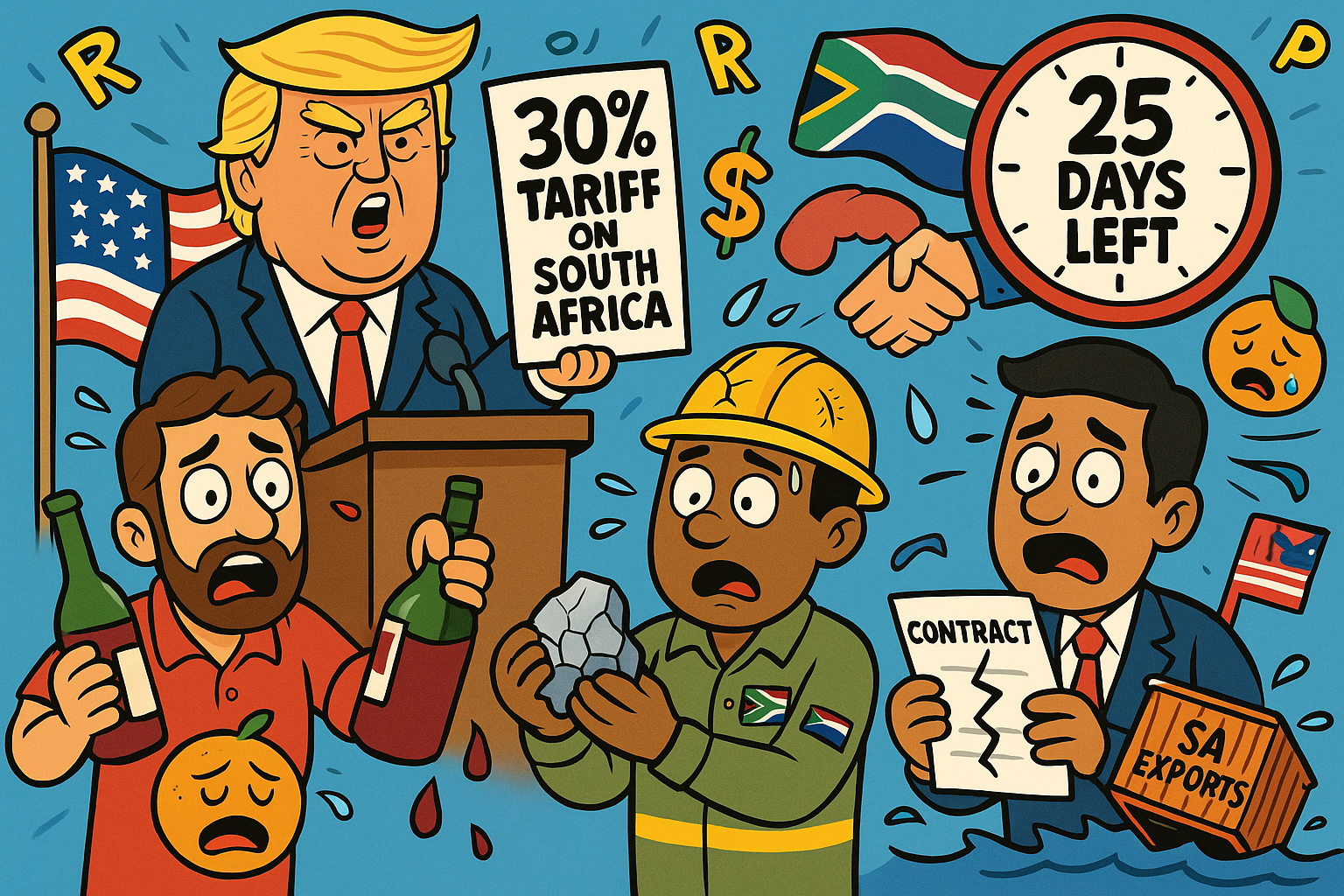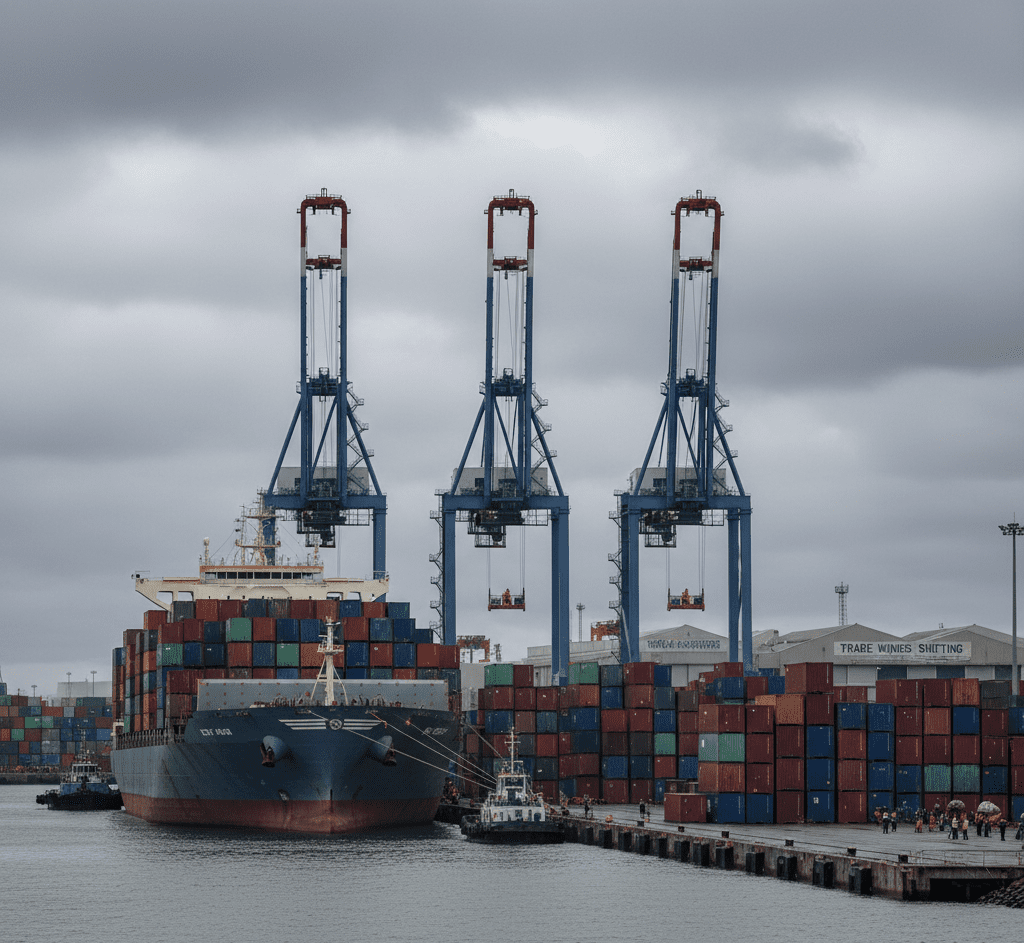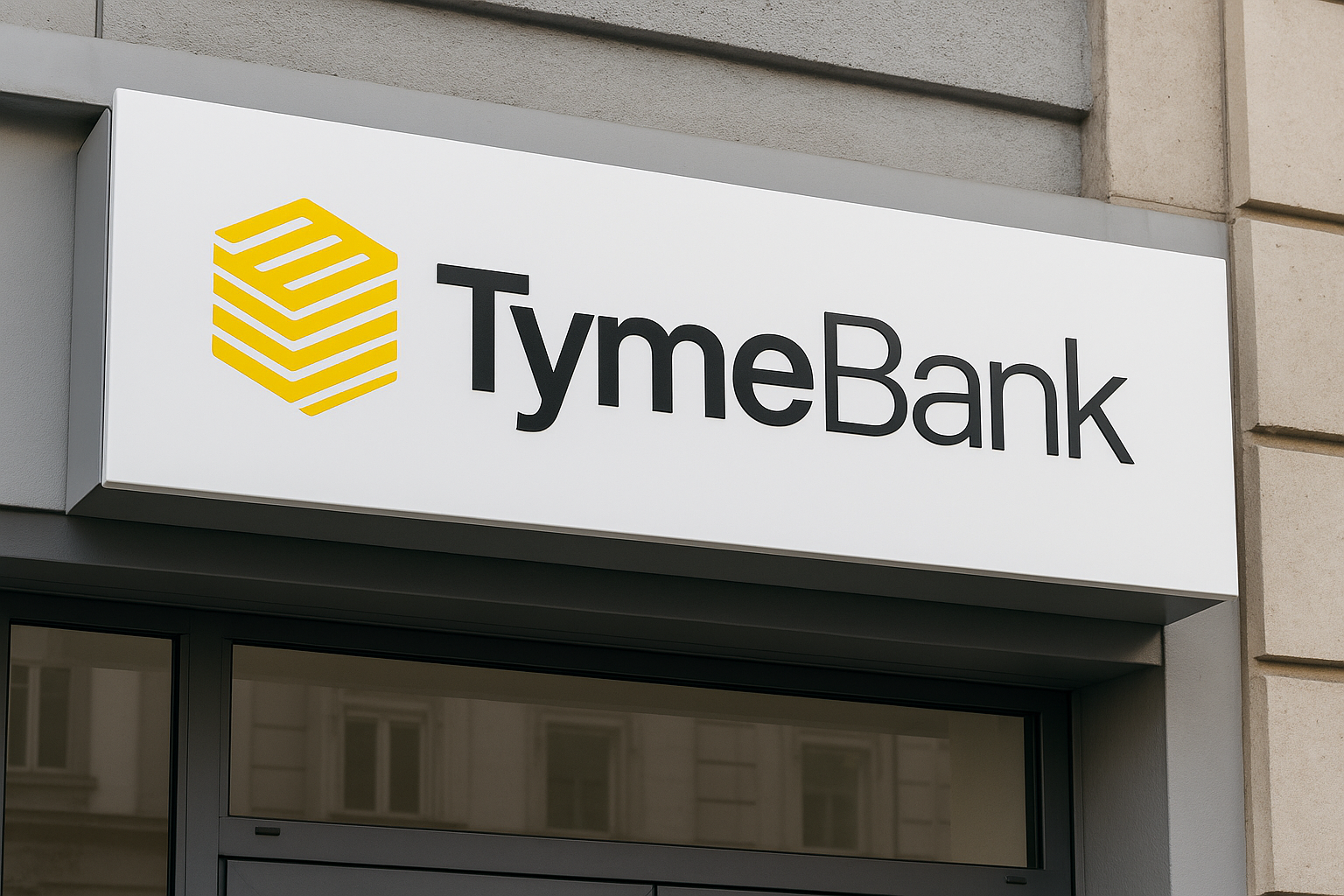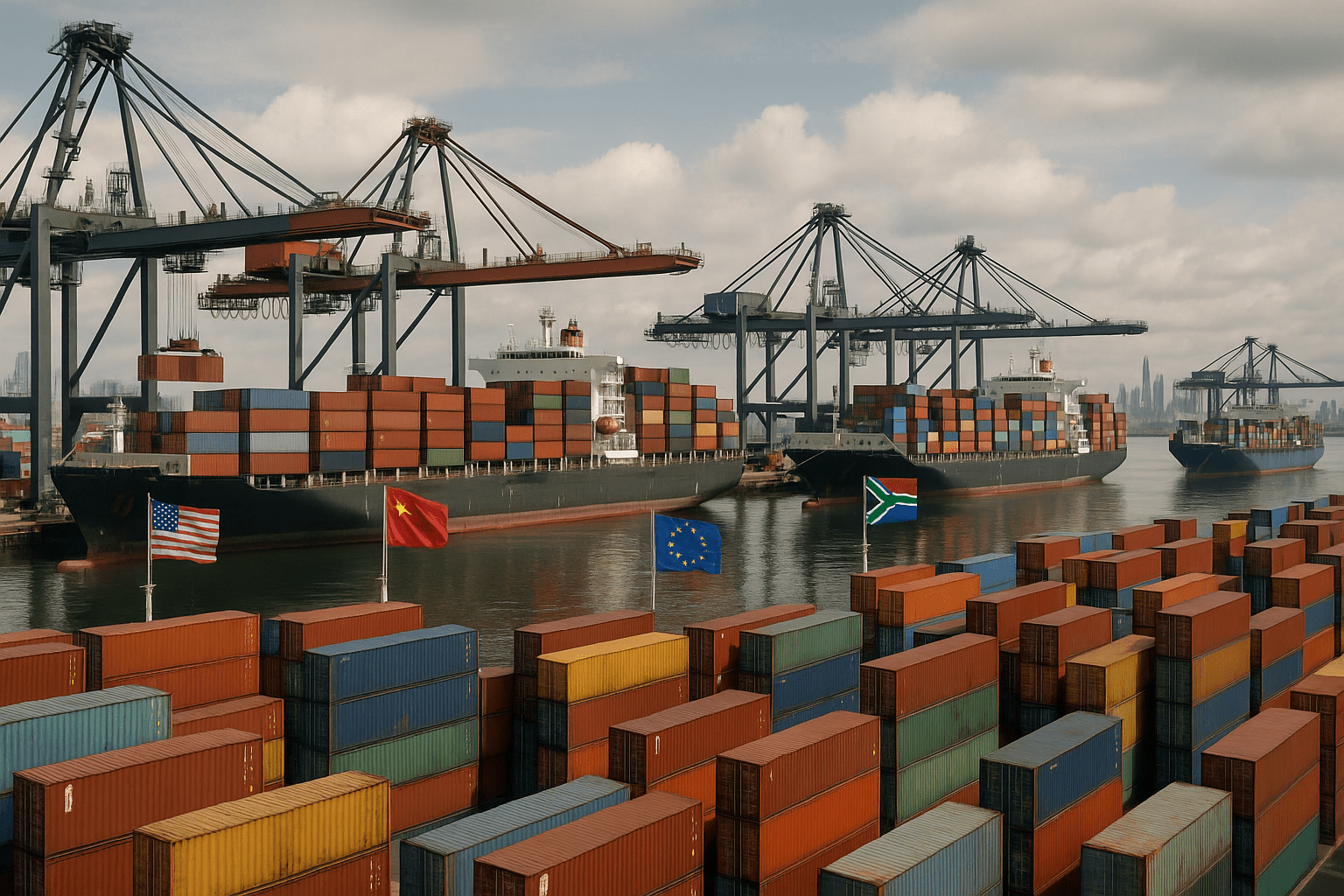Trump’s 30% Tariff Bombshell: Why SA Businesses Are Scrambling

Trump’s 30% Tariff Bombshell: Why SA Businesses Are Scrambling
Within hours, SA exporters across the country were staring at the same nightmare: a blanket 30% tariff on all South African goods entering the US, effective August 1st. No exceptions, no grace period, no room for negotiation.
Your premium wine heading to Manhattan? Add 30%. That platinum contract with Detroit manufacturers? Same story. The automotive parts your Joburg factory ships to Ford? You’re looking at pricing chaos that could kill decades-old relationships overnight.
This isn’t another trade spat that’ll blow over after a few diplomatic dinners. Trump’s tariff announcement represents the most serious threat to SA-US trade relations since sanctions ended, and businesses have exactly 25 days to figure out how to survive it.
The Numbers Don’t Lie (Even If Politicians Do)
Trump’s justification? He claims South Africa slaps a 60% tariff on American goods. Ramaphosa fired back with actual data: SA’s average tariff on US products sits at 7.6%, with 77% of American goods getting preferential treatment under various trade agreements.
Someone’s math is seriously off, but SA exporters are the ones paying for it.
The real numbers paint a different picture entirely. South Africa and the US traded R180 billion worth of goods in 2024, with a slight trade surplus favoring America. We import R95 billion from them, they buy R85 billion from us. That’s not exactly the “unfair” relationship Trump describes.
But here’s the thing about trade wars: facts matter less than politics, and politics rarely follow economic logic.
What Gets Hit Hardest
Every sector feels this punch differently, but some are getting absolutely hammered:
Mining and precious metals take the biggest hit, representing 40% of our US exports. Anglo American is looking at potential revenue losses of R2-3 billion annually. Sibanye-Stillwater might need to source from non-SA mines for their US operations. Impala Platinum faces reduced market access for PGM products.
Wine industry executives are pulling late-night strategy sessions. With R9 billion in annual US exports, that 30% tariff turns a R200 bottle into a R260 nightmare for American consumers. Try explaining that price jump to your distributor in California when Spanish and Moroccan competitors don’t carry Trump’s baggage.
Automotive sector faces a double whammy: higher costs for SA-made components and potential disruption of integrated supply chains. BMW SA and Mercedes-Benz SA are scrambling to reconsider their entire US export strategy.
Agricultural exports worth R4.2 billion in citrus alone face impossible pricing dynamics. Peak season just became a lot less profitable when your competitors aren’t carrying 30% markup.
The Ripple Effect Most People Miss
Everyone’s talking about exporters, but the real economic damage runs deeper. The rand took an immediate hit when markets opened after Trump’s announcement, affecting every business that imports anything from the US.
Local manufacturers relying on American machinery and components face higher input costs. Tech companies using US software licensing deal with margin pressure. Even service businesses offering consulting to US clients find their competitiveness evaporating.
The job losses won’t show up in statistics for months, but they’re coming. Export-dependent regions like the Western Cape wine lands and mining areas across Limpopo and North West provinces will feel this first.
Government Response: All Talk, No Time
The Department of Trade, Industry and Competition issued the standard diplomatic response about “negotiating teams” working to resolve the dispute. President Ramaphosa’s office talks about challenging Trump’s tariff justification through proper channels.
Nice words, but August 1st is coming whether diplomats agree or not.
The government has announced emergency support measures including export financing assistance through the IDC, market diversification grants, and trade mission support. These programs might help in the medium term, but they won’t solve the immediate crisis facing businesses with US contracts signed months ago.
What Smart Businesses Are Doing Right Now
The winners in this mess aren’t waiting for government solutions. They’re moving fast on three fronts:
Market diversification is the immediate priority. Companies are dusting off expansion plans for African Continental Free Trade Area opportunities, European Union partnerships, and Asian markets. The wine industry is accelerating direct-to-consumer sales channels while exploring premium segments with less price sensitivity.
Supply chain restructuring is happening in real-time. Companies with US operations are considering nearshoring production to Mexico or Canada, exploring third-country partnerships to serve the US market, and renegotiating contracts to share tariff burden with US partners.
Domestic market investment is the long-term play. Smart businesses are strengthening local supply chains, pursuing import substitution opportunities, and building regional value chains within Southern Africa.
The Opportunities Nobody’s Talking About
While everyone focuses on the immediate crisis, the Trump tariff actually accelerates some positive trends for SA businesses.
BRICS partnerships suddenly look more attractive. Brazil, Russia, India, and China are offering preferential trade terms that make their markets more competitive than the US for many SA products.
African markets under the AfCFTA framework provide growth opportunities that many SA businesses have ignored while focusing on developed markets. The tariff crisis might force the regional integration that economists have been advocating for years.
Middle Eastern economies seeking resource partnerships offer alternatives for mining and agricultural exports. Southeast Asian countries with growing middle-class consumers represent untapped markets for SA manufactured goods.
The Harsh Reality Check
The Trump 30% tariff isn’t just another trade dispute that’ll resolve itself through diplomatic channels. It’s a fundamental shift in how global trade works, and SA businesses can’t afford to wait for politicians to sort it out.
The companies that survive this will be those that move fastest: diversify markets this week, restructure supply chains next week, start shipping to new destinations before month-end. The clock is ticking, and 30% tariffs don’t negotiate.
Your export strategy just got a reality check. The question is: what are you going to do about it?




